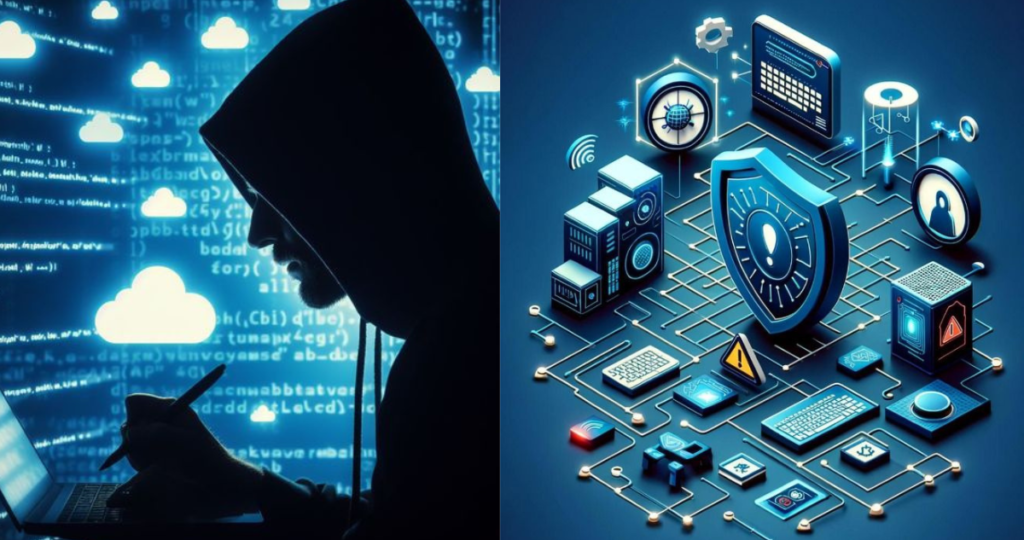In today’s digital age, our reliance on technology has made cyber security a critical aspect of our daily lives. With the widespread use of the internet, smartphones, and social media, we generate an immense amount of personal data that needs protection. Cyber security is no longer a concern just for tech-savvy individuals or large corporations; it’s a vital necessity for anyone who uses digital technology.
The purpose of this post is to educate readers on the key aspects of cyber security, including its definition, types of cyber threats, and importance for individuals, businesses, and governments. By understanding cyber security, you’ll be better equipped to protect yourself from cyber-attacks and data breaches, which can have severe consequences on your personal and professional life.
What is Cyber Security?
Cyber security, also known as information technology security, is the practice of protecting digital information, systems, and networks from unauthorized access, use, disclosure, disruption, modification, or destruction. This includes protection against malware, viruses, hacking, phishing, and other types of cyber threats.
Importance of Cyber Security
Cyber security is crucial for:
- Individuals: to protect personal information, financial data, and online identity from cyber-attacks and data breaches.
- Businesses: to safeguard sensitive data, intellectual property, and customer information, as well as to maintain trust and reputation.
- Governments: to protect national security, critical infrastructure, and citizen data from cyber-attacks and espionage.
Types of Cyber Threats
Cyber threats come in various forms, each with its unique characteristics and potential impact. Let’s dive deeper into some of the most common types of cyber threats:
Hacking
Hacking refers to the unauthorized access or manipulation of computer systems, networks, or data. Hackers may use various techniques, such as password cracking, social engineering, or exploiting vulnerabilities, to gain access to sensitive information. Types of hacking include:
- Network hacking: accessing a computer network without permission
- Web hacking: exploiting vulnerabilities in websites or web applications
- Social hacking: manipulating individuals into revealing sensitive information
Phishing
Phishing is a type of social engineering attack where attackers trick victims into revealing sensitive information, such as passwords, credit card numbers, or personal information. Phishing attacks often occur through:
- Email phishing: fraudulent emails that appear legitimate
- SMS phishing (Smishing): fraudulent text messages
- Whaling: targeted phishing attacks on high-profile individuals
Ransomware
Ransomware is a type of malware that encrypts a victim’s files and demands payment in exchange for the decryption key. Ransomware attacks can be devastating, resulting in data loss and financial losses.
Malware
Malware refers to any software designed to harm or exploit a computer system. Types of malware include:
- Viruses: software that replicates itself and spreads to other systems
- Trojan horses: software that appears legitimate but contains malicious code
- Spyware: software that secretly monitors and collects personal information
Denial of Service (DoS) attacks
DoS attacks involve overwhelming a system or network with traffic in order to make it unavailable to users. This can be done by flooding the system with requests or using malware to exploit vulnerabilities.
Cyber Security Measures
To protect against these cyber threats, it’s essential to implement various security measures, including:
Firewalls
Firewalls act as a barrier between a trusted network and an untrusted network, blocking unauthorized access and controlling incoming and outgoing traffic.
Encryption
Encryption scrambles data to make it unreadable to unauthorized parties, ensuring that even if data is intercepted, it cannot be accessed.
Strong Passwords and Multi-Factor Authentication
Using strong, unique passwords and enabling multi-factor authentication adds an extra layer of security, making it more difficult for attackers to gain access.
Cyber Security Best Practices
To stay safe online, follow these best practices:
Avoid Suspicious Links and Attachments
Be cautious when clicking on links or opening attachments from unknown sources, as they may contain malware or phishing scams.
Use Public Wi-Fi Securely
When using public Wi-Fi, avoid sensitive activities like online banking or shopping, and consider using a virtual private network (VPN) to encrypt your connection.
Keep Personal Information Private
Be mindful of sharing personal information online, and adjust your privacy settings on social media platforms to limit who can access your information.
Cyber Security Trends and Future Directions
Emerging trends in cyber security include:
- Artificial Intelligence and Machine Learning: AI-powered security tools and ML-powered threat detection
- Internet of Things (IoT) Security: securing connected devices and networks
- Cloud Security: securing cloud-based infrastructure and data
- Quantum Computing: addressing the potential impact of quantum computing on cyber security
Conclusion
In this comprehensive guide, we’ve embarked on a journey to demystify the complex world of cyber security. We’ve delved into the types of cyber threats, the importance of cyber security for individuals and businesses, and the measures that can be taken to prevent attacks. We’ve also explored the various career paths and education options available in the field of cyber security, as well as the emerging trends that are shaping the future of cyber security.
As we conclude this journey, remember that cyber security is a shared responsibility that requires awareness, education, and proactive measures. It’s a continuously evolving landscape that demands our attention and vigilance. So, stay informed, stay safe, and stay ahead of the threats.



